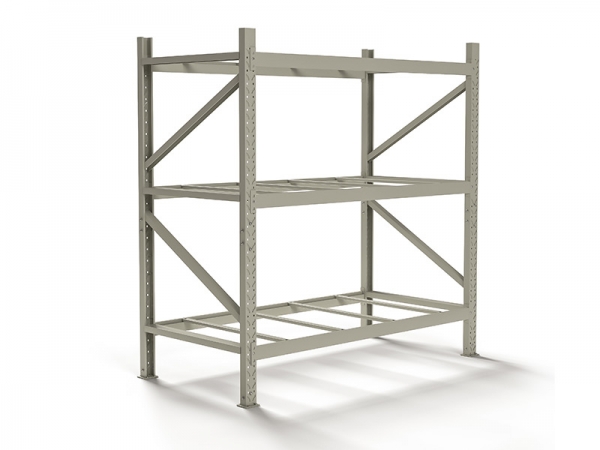Shelves are generally divided into light shelves, medium shelves, and heavy shelves. Among these types, the most widely used ones belong to the heavy-duty racks. For the heavy-duty racks, we usually use more, but the real understanding of the heavy-duty racks may really not be much, so the following is a detailed introduction to the heavy-duty racks and Precautions for its use, so that we can use it better.
Heavy-duty racks can also be called beam-type racks, or we call them position-type racks, which belong to the category of pallet racks and are a common type of storage racks. It can be directly installed according to the characteristics of the storage unit container equipment, such as: partitions, steel laminates, metal wire mesh layers, storage cage rails, oil drum racks and other equipment accessories to meet various needs.

Heavy-duty racks are mainly assembled by columns, beams, cross braces, diagonal braces and self-locking bolts. Such a structure can play a stabilizing role and effectively prevent the instability of the rack after the bolts are loosened. The columns and columns of the heavy-duty racks Special safety pins are set at the joints to ensure that the beams will not fall off under the impact of external forces. The beams of the racks are simple, safe and reliable, light weight, strong bearing capacity, and low cost. It has the advantages of strong bearing capacity, good wear resistance, simple replacement and low maintenance cost.
When installing heavy-duty racks, we must first install the cross brace (horizontal pull) and diagonal brace (oblique pull) on a column with screws. Then, the two assembled vertical column pieces can be erected on the ground, and the distance between the two vertical column pieces can be continuously adjusted to the length of the beam, and then the additional beam can be installed.

Prevent weight tilt
When using heavy-duty racks, we must pay full attention to this point. When placing a cargo, we must follow the principle of placing light goods on the upper floors and heavy goods on the bottom to avoid top-heavy situations.
Anti-overload
Regardless of the type of shelf, each shelf has strict load-bearing standards, so the weight of the goods on the shelf should not exceed the carrying capacity of the shelf.
Anti-collision
As there are more forklifts used in heavy-duty racks, light-duty placement should be adopted as much as possible in operation to prevent rack collision accidents.
Pay attention to the safety of the staff
When encountering goods above the shelf, it is necessary to pay attention to the operation and management personnel can not directly enter the bottom of the shelf economically, so as to avoid the occurrence of staff safety accidents caused by the company.

Equipment quality
In order to prevent the use of non-standard floors (cardboards), pallets, etc. when using shelves, the Chuan font is more suitable.
Number of shelf heights
The shelf height of heavy-duty shelves generally cannot exceed eight meters. Once the height exceeds eight meters, corresponding loading and unloading machinery is required. Therefore, the total channel area required is relatively large.
The above is all about what a heavy-duty shelf is and the precautions in use of the shelf. I believe that everyone will know more after reading it. When we choose the shelf, we must choose the shelf with good corrosion resistance to extend it. The shelf life.